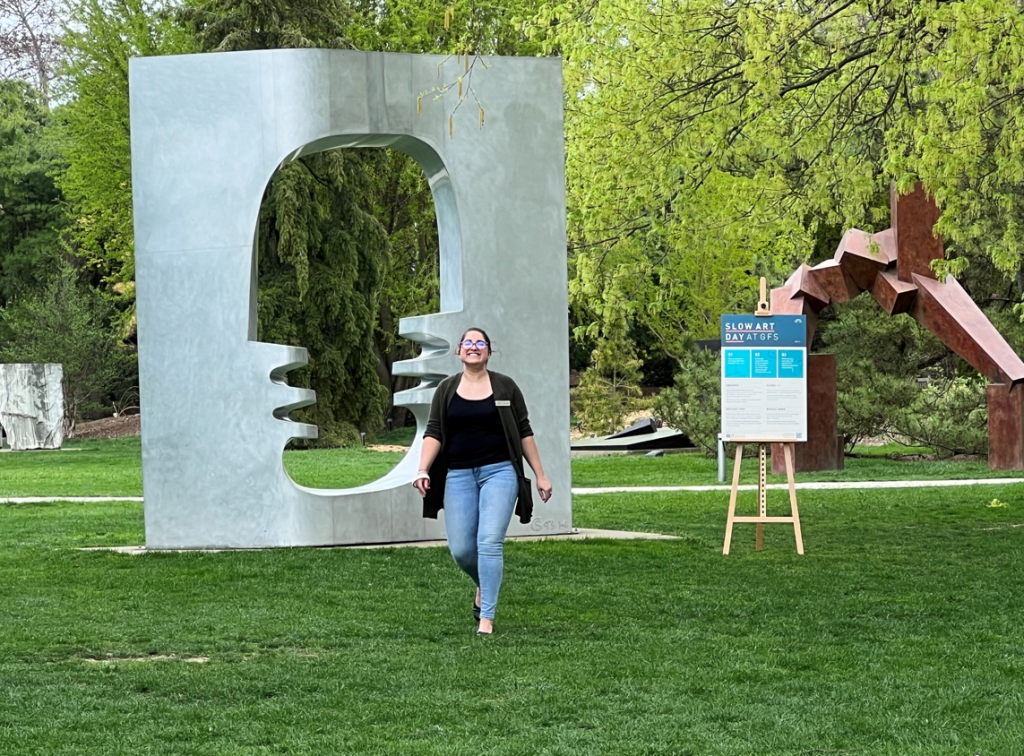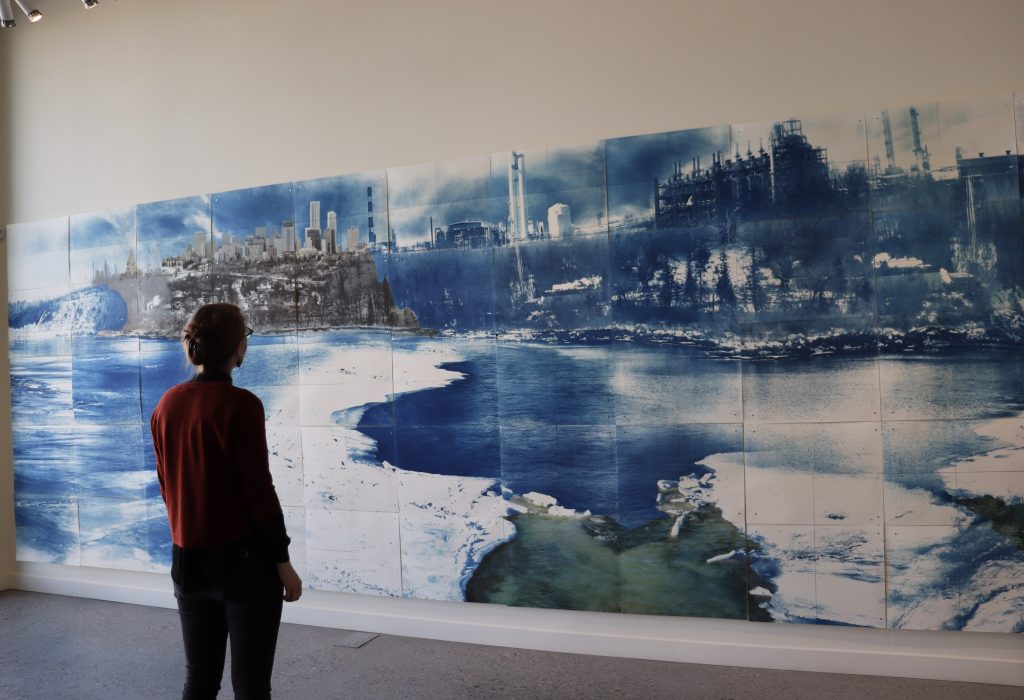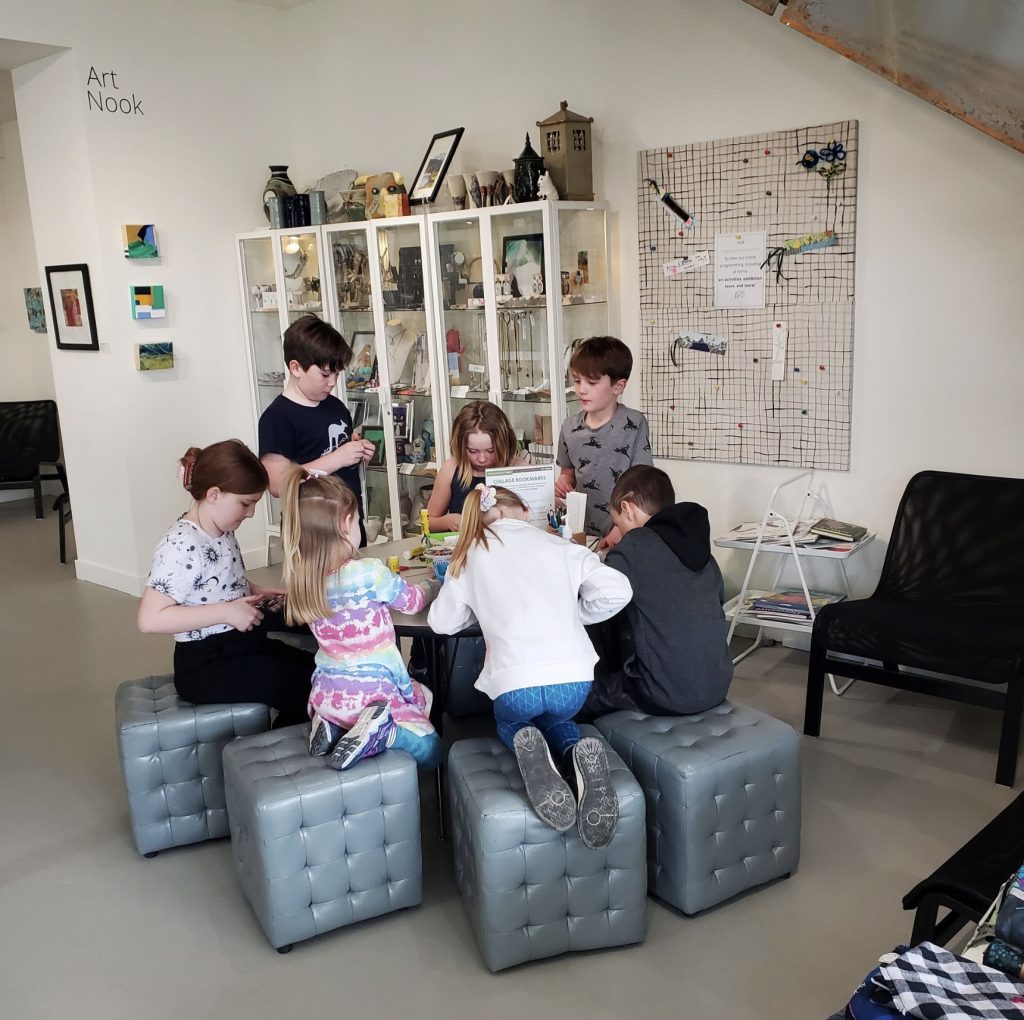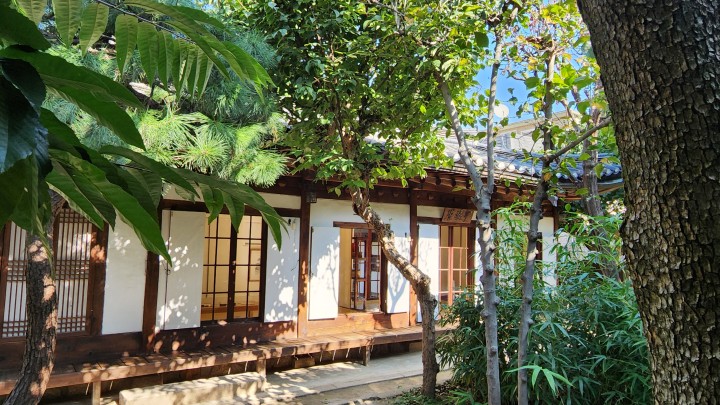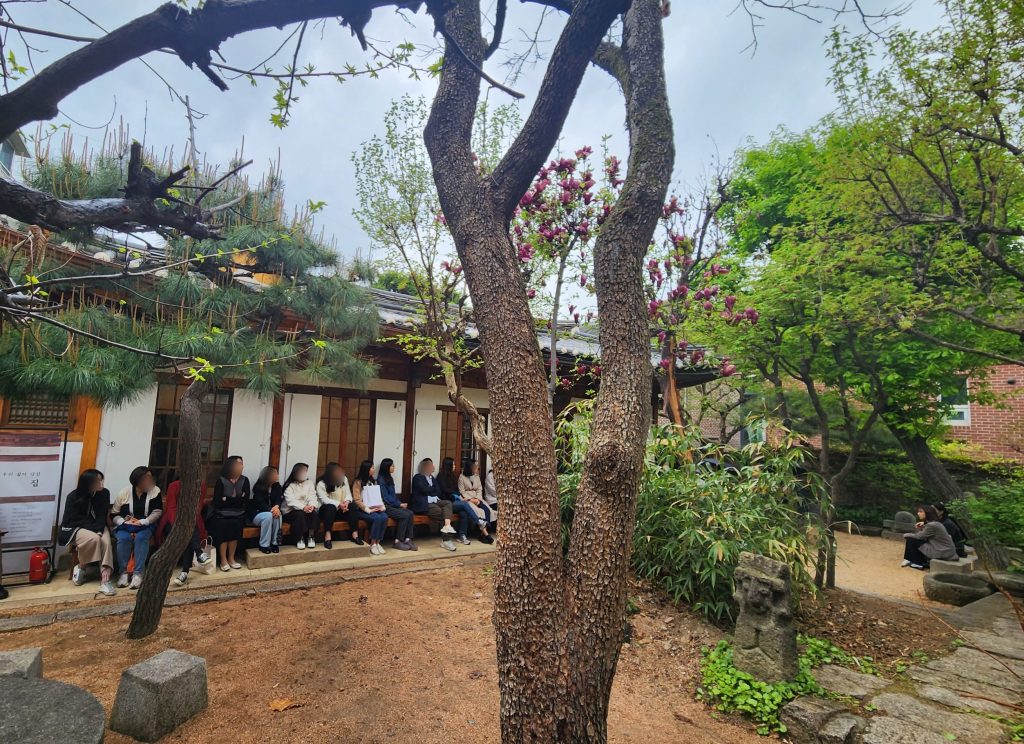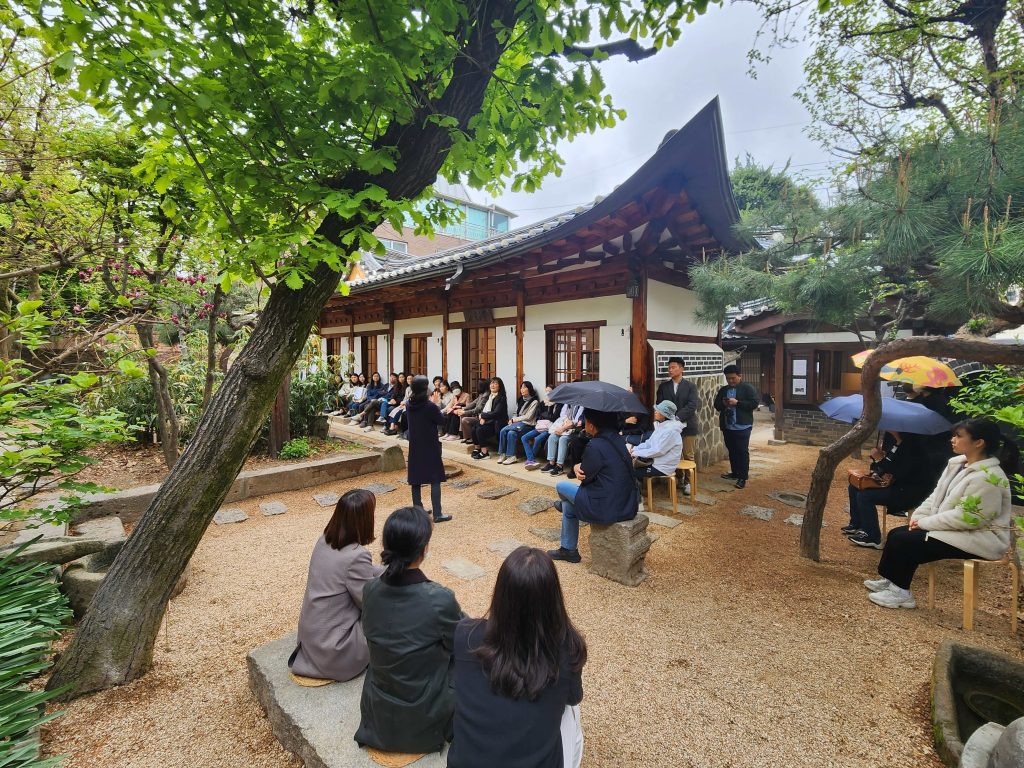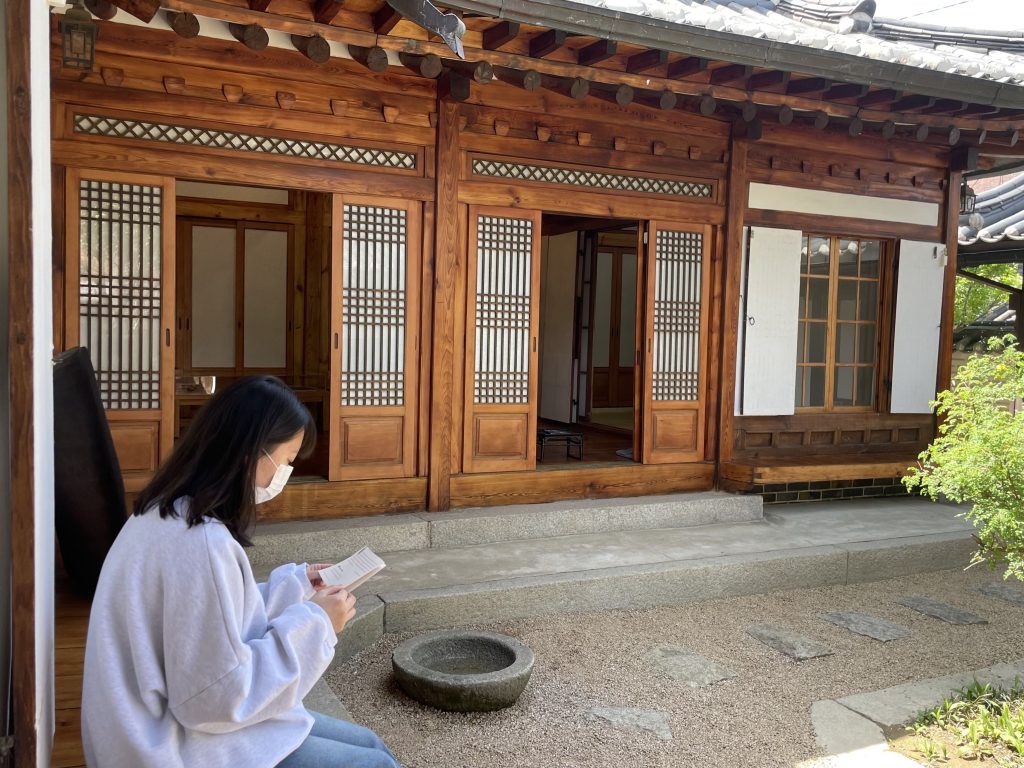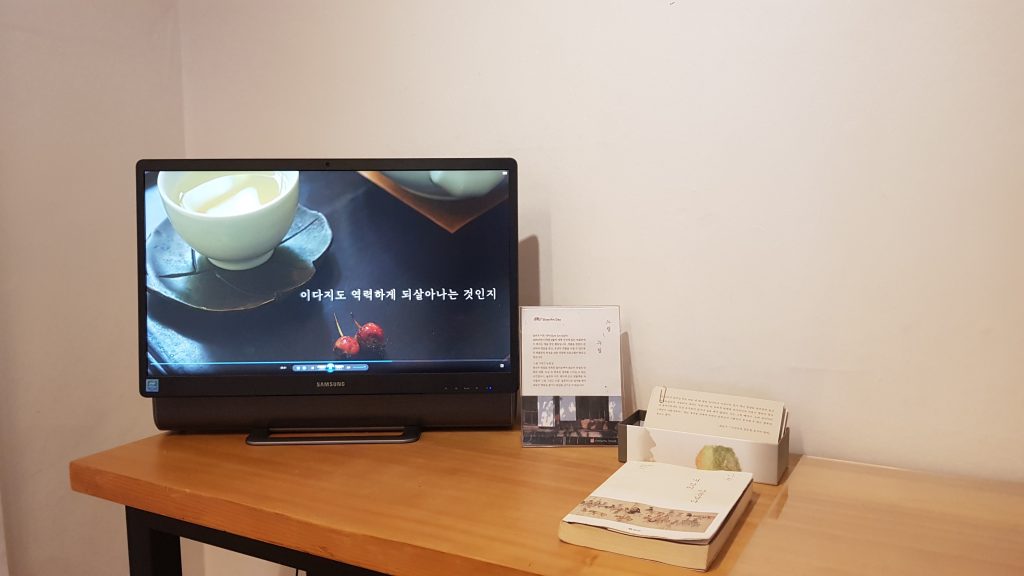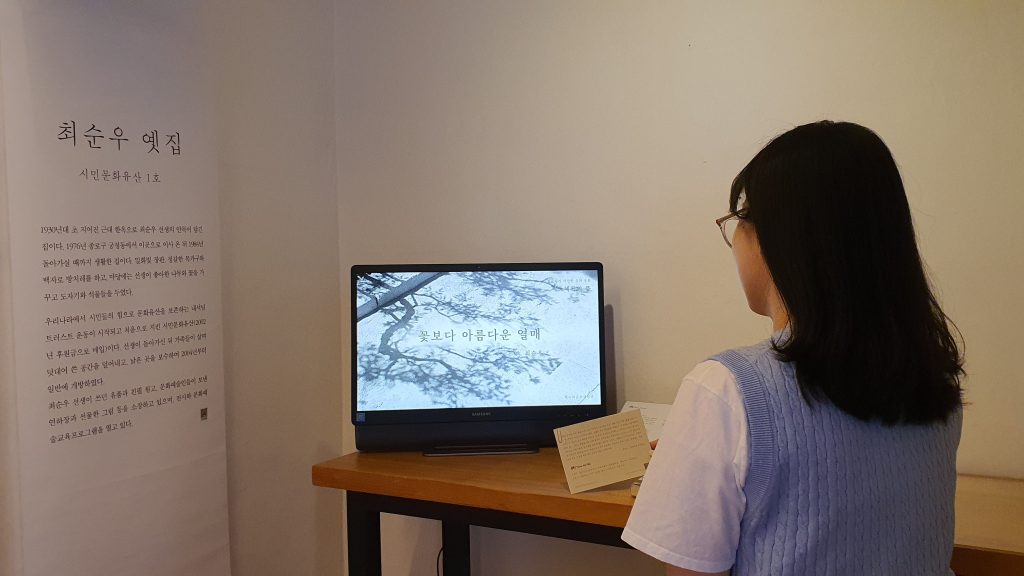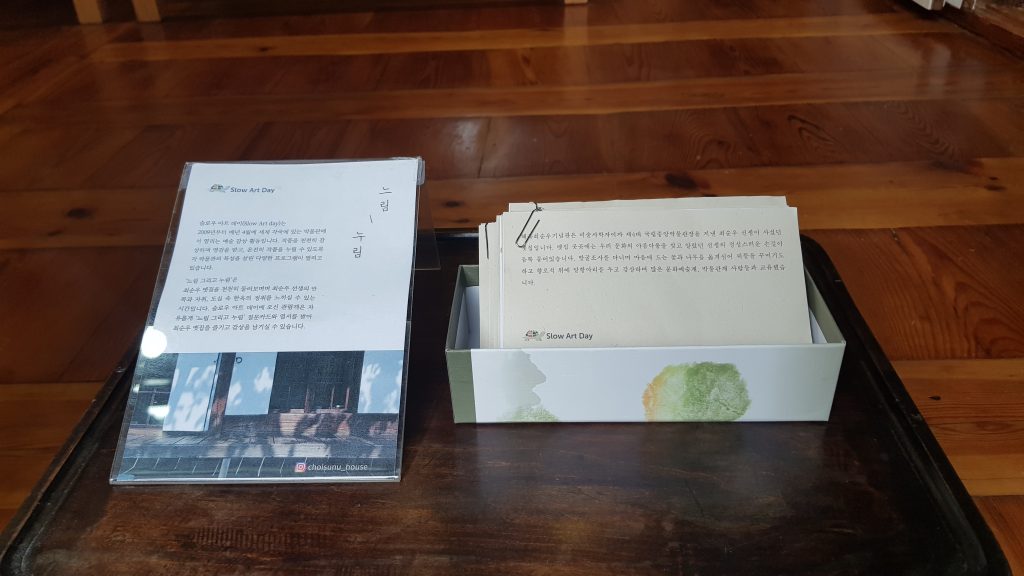For their second Slow Art Day, Angel Ambrose Fine Art Studio in Bloomington, Illinois invited visitors to consider the well known wedding rhyme “Something Old, Something New, Something Borrowed, Something Blue” as part of the city-wide Slow Art Day in this famous Route 66 town.

Angel invited visitors to her studio to look slowly at a selection of works that corresponded with the rhyme:
– Something Old: an “old” painting from Angel’s BFA show at Illinois State University
– Something New: a selection of new artworks by Angel
– Something Borrowed: an Ansel Adams photo on loan from a private collection
– Something Blue: a painting titled “Magnificent Blues,” on loan from the private collection of Wendy Knight Ives (pictured below).


Angel also shared a slow looking activity on Facebook for online participants.
Give yourself 3-5 minutes of silence to focus on one piece of art. Think about these prompts as you view the selected art, (and answer them for yourself afterwards if you wish):
For your head (objective thought/intellect) you can consider any of the following:
- What did you see? What decisions did you notice that Angel made in her painting—line, color, texture, form, repetition, contrast, etc? Was there a color scheme/theme apparent? Notice the paint—can you see individual brushstrokes, or a smooth surface, or perhaps another tool was used to apply the paint? How was movement used in the artwork? Was the piece representational, abstracted, or somewhere between? Why do you think Angel chose this format?
For your heart (feelings/emotions), consider the following:
- How did you feel when you looked at the work? Did the colors evoke any emotions? What did these feelings make you think about? Did your mood change after looking at the artwork? Did you experience any personal significance to the piece?”
Angel reported that the event was a success, with many new visitors and lots of great conversations.
At Slow Art Day HQ we love how this and the other galleries in Bloomington have been pioneering citywide events. (Note: rumors are that a state-wide Slow Art Day is now being considered in Illinois!)
Best,
– Johanna, Ashley, Jessica Jane, and Phyl












